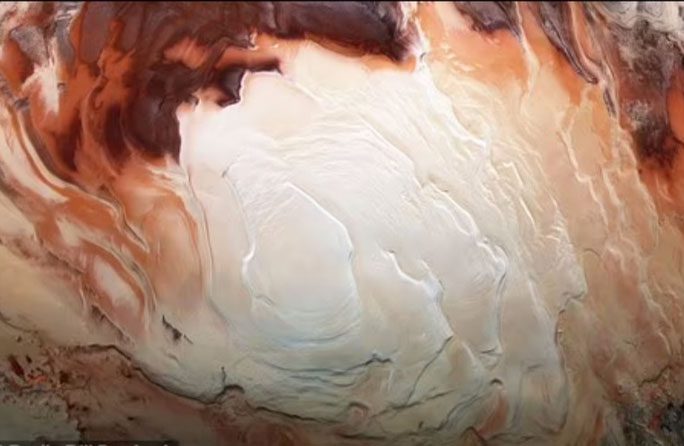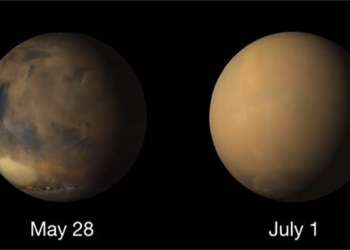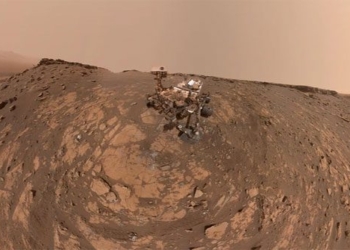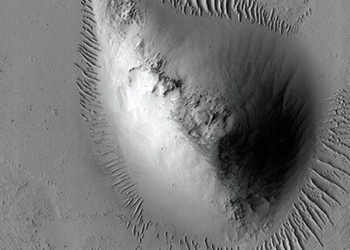By reanalyzing data from ESA’s Mars Express, NASA scientists have discovered evidence suggesting that the red planet near us is not a dry, barren sphere.
The new study, conducted in collaboration with two leading space agencies, NASA and ESA, promises to change long-held beliefs about Mars. It may not be completely “dead” due to drought, but rather still abundant in water and possibly even volcanic activity!

ESA captured image showing land that may conceal large lakes beneath – (Image: ESA).
According to Science Alert, the research team from NASA’s Jet Propulsion Laboratory (JPL) detected unusual radar reflections around the southern polar region of Mars, in an area known as the South Polar Layered Deposits. These signals revealed dozens of subsurface lakes located less than 1.6 kilometers beneath the surface. Thus, Mars actually has much more water than previously thought!
The Daily Mail reports that the saddest aspect is that some of these lakes are in areas that may be too cold for water to remain in a liquid state, even with the presence of the salty perchlorate minerals identified by NASA.
“We are not certain if these signals represent liquid water, but they spread wider than initial studies suggested,” explained Dr. Jeffrey Plaut from JPL.
This evidence adds to a study published by NASA in March, which indicated that water on the red planet has not completely escaped into space as previously believed, but primarily “sinks” into the planet. This phenomenon also occurs on Earth: in fact, the total amount of water in surface oceans is much less than the water that is “held” in the mantle.
Currently, the average surface temperature of Mars is minus 63 degrees Celsius, too cold for water to exist in a liquid state. However, previous evidence from NASA suggested that some underground lakes could indeed contain liquid water! Liquid water is one of the essential conditions for a world to support life.
According to the research team, besides the presence of salty minerals, the existence of liquid water beneath the lakes could also have another plausible explanation: volcanic activity. If this is true, it would be great news, as volcanoes and other geological activities are excellent conditions for supporting life. In the Solar System, Earth is the only planet that still has geological activity, which contributes to stabilizing the modern climate and creating the necessary conditions for life to emerge and evolve billions of years ago.
The only obstacle is that NASA has not yet found clear evidence of volcanic activity. This may become a target for their future Mars missions.
This study has just been published in the scientific journal Geophysical Research Letters.





















































